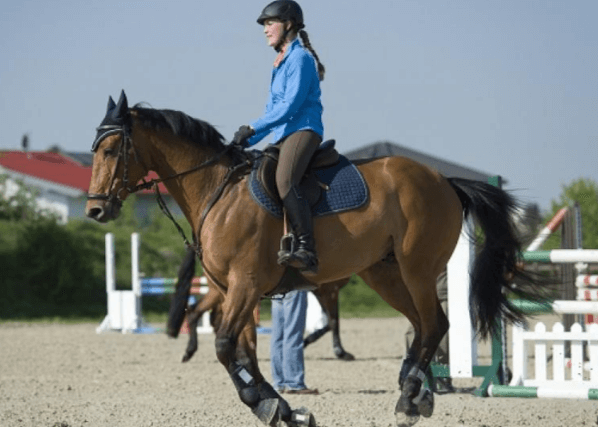How can riders improve their horse’s speed and agility for gymkhana?

Introduction
Gymkhana, a fast-paced equestrian sport involving timed games, requires a unique blend of speed, agility, and precision. For riders aiming to excel, improving their horse’s capabilities is essential. This article will explore comprehensive strategies to enhance a horse’s speed and agility for gymkhana events. We’ll cover training routines, exercises, nutrition, and more to ensure your horse performs at its best.
Understanding Gymkhana
What is Gymkhana?
Gymkhana is a competitive equestrian sport that consists of a series of timed games, such as barrel racing, pole bending, and keyhole races. These events test the speed, agility, and precision of both the horse and rider.
Importance of Speed and Agility
In gymkhana, the fastest time wins. However, agility is equally important as horses must navigate tight turns, sudden stops, and quick accelerations. The combination of speed and agility determines overall success in these events.
Assessing Your Horse’s Ability
Evaluating Current Performance
Before starting a training regimen, assess your horse’s current speed and agility levels. Conduct timed trials for specific events to establish a baseline.
Identifying Strengths and Weaknesses
Analyze performance to identify areas where your horse excels and aspects needing improvement. Understanding these will guide your training focus.
Training for Speed
Interval Training
Implement interval training to boost your horse’s speed. Alternate between periods of intense activity and rest to enhance cardiovascular efficiency and stamina.
Sprint Workouts
Incorporate sprint workouts into your training. Short, intense sprints followed by rest periods can significantly improve your horse’s overall speed.
Progressive Conditioning
Gradually increase the intensity and duration of workouts to avoid injuries and build your horse’s fitness over time.
Enhancing Agility
Lateral Movements
Practice lateral movements such as side passes and leg yields to improve flexibility and coordination.
Circles and Serpentines
Use circles and serpentines to teach your horse to balance and maneuver effectively through tight turns.
Pole Work
Set up pole exercises to develop agility and precision. Poles on the ground help with quick footwork and coordination.
Building Stamina
Endurance Training
Incorporate endurance training sessions to build your horse’s stamina. Long, steady rides at a moderate pace can improve cardiovascular health and endurance.
Incorporating Long Rides
Include regular long rides in your training routine. These rides help develop the horse’s ability to sustain effort over extended periods.
Nutrition and Diet
Balanced Diet for Optimal Performance
Ensure your horse receives a balanced diet rich in essential nutrients. Consult with an equine nutritionist to develop a diet plan tailored to your horse’s needs.
Supplements and Hydration
Consider supplements to support muscle recovery and overall health. Maintain proper hydration, especially during intense training sessions.
Equipment and Gear
Choosing the Right Tack
Select tack that is comfortable and fits well. Ill-fitting tack can cause discomfort and hinder performance.
Protective Gear for Safety
Use protective gear such as leg wraps and bell boots to prevent injuries during high-speed exercises.
Mental Preparation
Building Trust and Communication
Develop a strong bond with your horse through consistent, positive interaction. Trust and communication are crucial for effective training.
Desensitization Techniques
Desensitize your horse to common distractions and stressors found in gymkhana events. This will help maintain focus and performance under pressure.
Practicing Gymkhana Events
Barrel Racing
Practice barrel racing techniques regularly. Focus on smooth, tight turns around barrels to shave off seconds from your time.
Pole Bending
Train for pole bending by setting up poles and practicing quick, precise movements. Accuracy is key in this event.
Keyhole Race
For the keyhole race, work on quick stops and tight turns to navigate the keyhole pattern efficiently.
Safety Considerations
Preventing Injuries
Implement a thorough warm-up and cool-down routine to prevent injuries. Regularly check for signs of soreness or strain.
Recognizing Signs of Fatigue
Learn to recognize signs of fatigue in your horse. Overworking can lead to injuries and decreased performance.
Monitoring Progress
Keeping a Training Journal
Keep a detailed training journal to track progress and adjust your training plan as needed.
Regular Performance Reviews
Conduct regular performance reviews to assess improvements and identify areas for further development.
Professional Help
When to Consult a Trainer
Seek professional help when necessary. A trainer can provide personalized guidance and advanced techniques.
Seeking Veterinary Advice
Consult a veterinarian regularly to ensure your horse’s health and well-being. Address any medical concerns promptly.
FAQs
How can riders improve their horse’s speed and agility for gymkhana?
Riders can improve their horse’s speed and agility for gymkhana by implementing a structured training program that includes interval training, sprint workouts, and progressive conditioning. Incorporating exercises that enhance agility, such as lateral movements and pole work, is also essential. A balanced diet, proper equipment, and mental preparation play significant roles in optimizing performance.
What exercises help improve a horse’s agility?
Exercises that help improve a horse’s agility include lateral movements (like side passes), circles, serpentines, and pole work. These exercises enhance flexibility, coordination, and precision, which are crucial for navigating gymkhana patterns.
Why is nutrition important for a horse’s performance in gymkhana?
Nutrition is vital for a horse’s performance in gymkhana because it ensures the horse has the necessary energy, muscle strength, and overall health to perform at its best. A balanced diet with appropriate supplements supports recovery and endurance, while proper hydration is crucial for maintaining performance during intense activities.
How often should I practice gymkhana events with my horse?
Practice gymkhana events regularly but avoid overtraining. Aim for 2-3 times a week, incorporating rest days to prevent fatigue and injuries. Balance event-specific practice with general fitness and agility training.
What type of tack is best for gymkhana?
The best tack for gymkhana is one that fits your horse well and is comfortable. Look for lightweight, durable equipment that allows for freedom of movement. Ensure that all tack is properly adjusted to prevent discomfort or injury.
How can I build a strong bond with my horse for better performance?
Building a strong bond with your horse involves consistent, positive interaction. Spend time grooming, feeding, and training together. Use reward-based training methods to reinforce trust and communication, which are essential for effective performance in gymkhana.
Conclusion
Improving your horse’s speed and agility for gymkhana requires a comprehensive approach. By focusing on targeted training, proper nutrition, mental preparation, and regular practice, you can enhance your horse’s performance and achieve success in competitive events. Remember to prioritize safety and monitor progress to ensure a well-rounded and effective training regimen.







